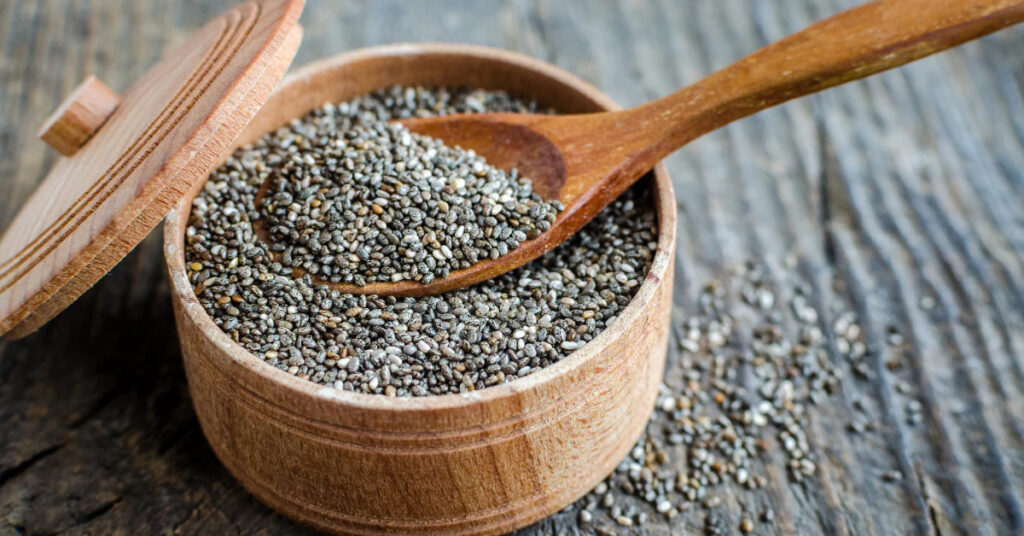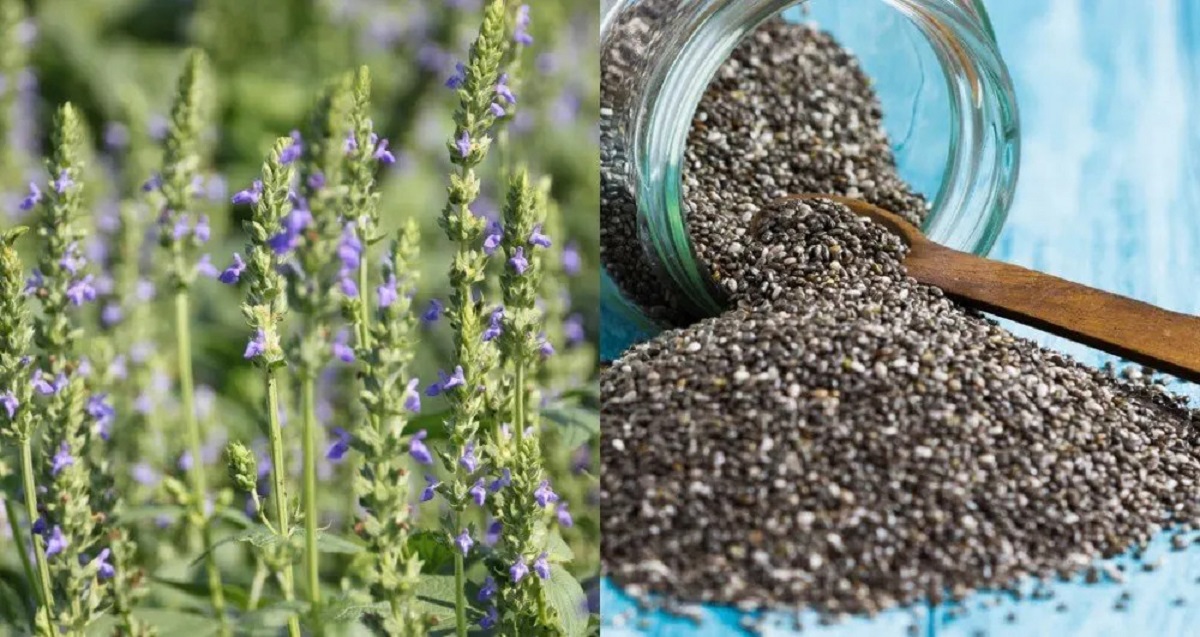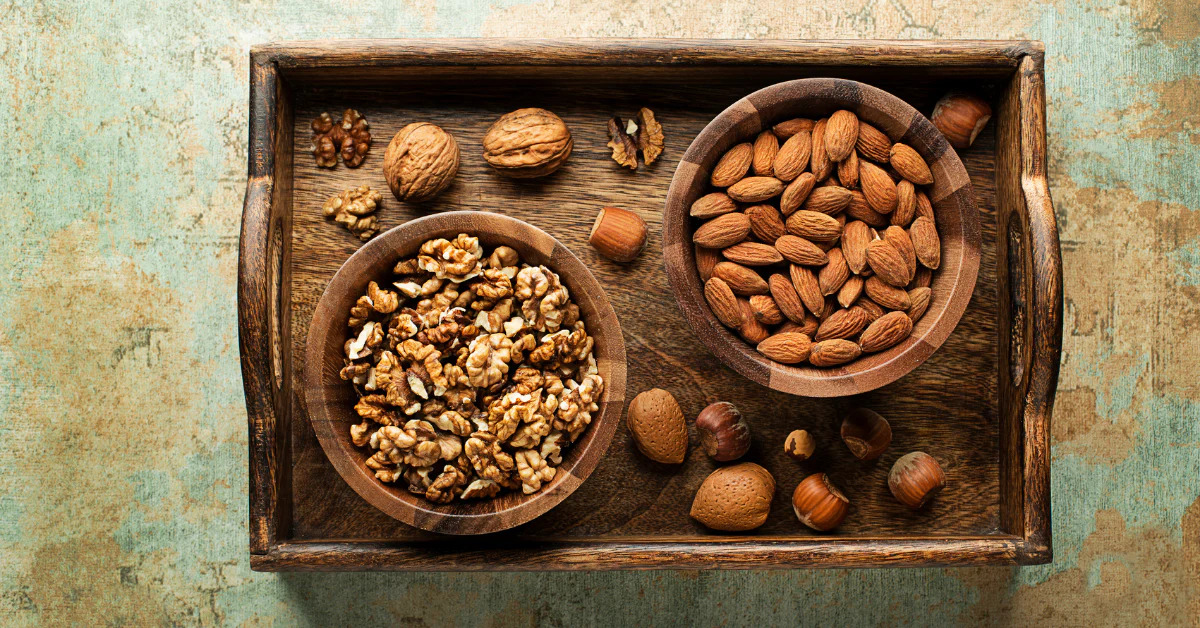Exploring The Difference Between White Vs Black Chia Seeds
Chia seeds are tiny seeds of the Chia plant known as Salvia hispanica. These seeds have become popular recently due to their nutritional profile and versatility. The Chia seeds commonly found in the market are of brown or black color, but you may have also seen different-looking chia seeds of White colors. You may be wondering the difference between these two varieties of chia seeds. Although black and white Chia seeds offer similar health benefits, you should know some distinct differences.
In this article, we will compare white vs black Chia seeds so that you can make an informed decision for your dietary and culinary needs.
What Are Chia Seeds?

Before moving to the difference between black and white chia seeds, first, we need to understand what chia seeds are. These are edible seeds and come from a flowering plant of the mint family. This plant is native to Mexico and Guatemala but is widely grown and commercially produced across the United States and South America. Typically, a chia plant reaches around 5 feet 9 inches above ground and blooms with white or purple flowers that develop on spikes at the end of each stem.
Chia seeds are flattened, oval, and small and usually have a diameter of less than 0.08 inches. They can be black, brown, or white in color and are hydrophobic, which means they can absorb water. When you soak chia seeds in water, they can absorb water up to twelve times their weight.
Surprisingly, white and black chia seeds come from the same plant species. However, the black seeds are produced by a dominant gene, and the recessive genes cause the white ones. It is a reason that black chia seeds are produced more often than white chia seeds.
Differences Between White vs Black Chia Seeds?
The most significant difference between white and black chia seeds is their color. As we have mentioned earlier, they are produced by the same plant and look different due to genetics.
However, we can not say that they are completely the same nutritionally. There are slight nutritional differences between these two chia seeds that are difficult to distinguish. These differences can vary depending on the growing conditions of plants.
1. Nutritional Differences
Here are some significant nutritional differences:
- Omega-3 Fatty Acids: Chia seeds, regardless of color, are exceptional sources of plant-based omega-3 fatty acids. These healthy fats support heart health, reduce inflammation, and improve overall well-being. The amount of Omega-3 fatty acids is less in white seeds than in black.
- Protein Content: Chia seeds contain moderate protein, making them a valuable addition to vegetarian and vegan diets. On average, 1 ounce of Chia seeds consists of 0.17 oz of protein, and black chia seeds contain more protein than white chia seeds. However, the difference is minor.
2. Taste And Texture
The taste and texture of chia seeds can vary slightly between white and black varieties:
The taste and texture of chia seeds can vary slightly between white and black varieties:
- White Chia Seeds: Some claim that white chia seeds have a milder, less noticeable taste than their black counterparts. They also have a slightly less pronounced crunch, making them preferable for those who want a more subtle addition to their dishes.
- Black Chia Seeds: Black chia seeds are often described as having a slightly nuttier or earthier flavor and a slightly crunchier texture, which some people find appealing in recipes.
3. Culinary Uses
Both white and black chia seeds are highly versatile in the kitchen and can be used interchangeably in most recipes. Here are some popular culinary uses for chia seeds:
- Smoothies: Chia seeds can be added to smoothies to enhance their nutritional value and provide a thicker consistency.
- Yogurt and Oatmeal: Sprinkle chia seeds on yogurt or oatmeal for added texture, flavor, and nutritional benefits.
- Toppings: Use chia seeds as a topping for salads, cereals, or desserts like puddings and parfaits.
- Baking: Chia seeds can also be used as a binding agent in vegan baking or as an egg substitute in various recipes.
4. Availability And Pricing
Black chia seeds have traditionally been more widely available and marketed. You can easily find them in grocery stores and online retailers. White chia seeds, on the other hand, are less common but can still be sourced from specialty stores or online sellers. Prices for both white and black chia seeds may vary depending on location and demand but are generally affordable considering their nutritional value.
What Are The Health Benefits Of Chia Seeds?
Chia seeds offer numerous health benefits regardless of their color. Some of these benefits are as follows:
Highly nutritious: Despite their tiny size, chia seeds have a highly nutritious profile and consist of nutrients like proteins, fats, fiber, calcium, magnesium, iron, Vitamin B1, and Vitamin B3, which makes them highly beneficial for human health. Due to this nutritional profile, they are also used for medicinal purposes.
Antioxidants: Chia seeds also contain a large number of antioxidants that not only protect fats in chia seeds from rancidity but benefit human health by neutralizing free radicals that can damage cells in our body.
Weight Management: Chia seeds’ fiber and protein content help in weight loss. According to research, dietary fiber prevents overweight and obesity, and protein helps reduce appetite and food intake.
Reduced Risk Of Heart Diseases: Chia seeds contain Omega-3 fatty acids and dietary fibers that benefit heart health. They promote cardiovascular health by reducing cholesterol levels and inflammation.
Bone Health: Chia seeds contain nutrients such as calcium, magnesium, and phosphorus that are important for bone health. These nutrients help in maintaining bone mineral density and indicators of bone strength.
Why Are White Chia Seeds More Expensive?
It is a common question many people ask because if black and white chia seeds come from the same plant and have the same nutritional profile, why are white ones expensive? It is because white chia seeds are rare compared to their black counterparts. This rarity in production allows growers to command higher prices for them, and consumers are willing to pay a premium for their aesthetically appealing seed color.
Conclusion
The summary of white vs black chia seeds is that, in the world of chia seeds, the choice between white and black chia seeds might seem purely cosmetic, but there are subtle differences worth considering. These tiny seeds, originating from the same plant, Salvia hispanica, offer a wealth of nutritional benefits and culinary uses.
While their nutritional content remains similar, black chia seeds tend to have slightly higher omega-3 fatty acids and protein levels. In contrast, white chia seeds are prized for their milder taste and less pronounced crunch, making them a preferred choice for those who desire a subtle addition to their dishes.
The choice between black and white chia seeds often comes from availability, personal preference, and aesthetics. Black chia seeds are more widely accessible, while white chia seeds are considered rare, thus commanding a higher price due to their visual appeal. Regardless of your choice, embracing chia seeds in your culinary journey can bring many health benefits and elevate the nutritional value of your meals.
FAQs
Chia seeds are small, edible from the Salvia hispanica plant, native to Mexico and Guatemala. They have become popular for their nutritional value and versatility in cooking.
The primary difference is their color. White chia seeds are lighter in color, ranging from beige to light gray, while black chia seeds are darker, ranging from dark brown to black.
While both varieties offer similar nutritional benefits, black chia seeds tend to have slightly higher omega-3 fatty acids and protein levels than white chia seeds. However, the differences are relatively minor.
Yes, there can be subtle taste differences. Some people describe white chia seeds as having a milder, less noticeable taste, while black chia seeds may have a slightly nuttier or earthier flavor.
You can use white and black chia seeds interchangeably in most recipes. They have similar culinary uses and offer the same health benefits.
White chia seeds can be found in some specialty stores or online retailers. While they may not be as widely available as black chia seeds, they can still be sourced with some effort.
Read More: How Much Food Waste In United States Yearly?
Read More: HOW AND WHEN TO SOW TOMATO SEEDS?



